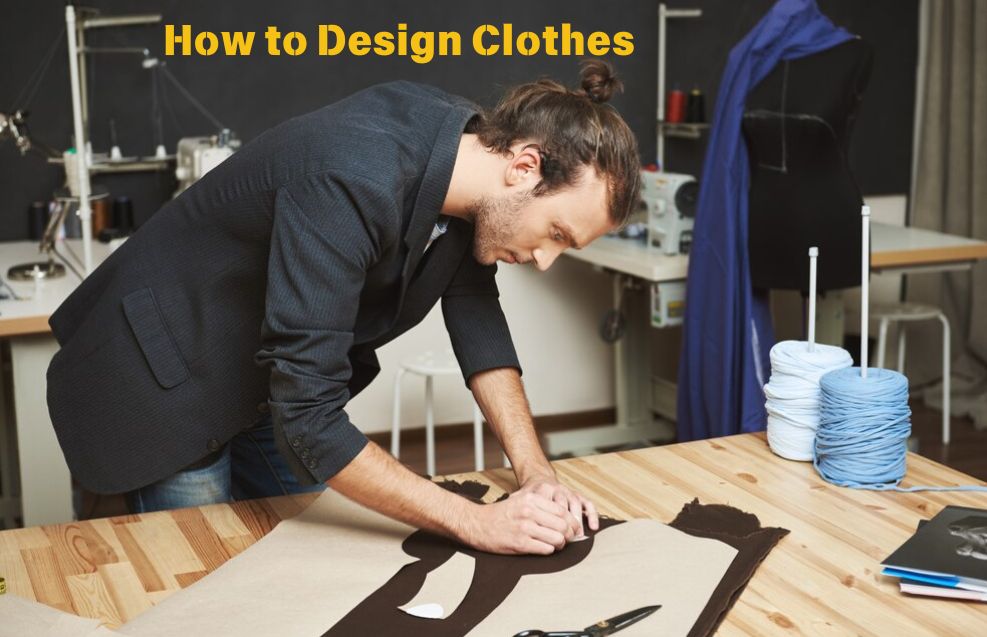Designing clothes is an art form that blends creativity, technical skills, and an understanding of current trends. Whether you’re an aspiring fashion designer or someone curious about the craft, knowing how to design clothes is a rewarding journey that can lead to self-expression and even a thriving career.
1. Understanding the Basics of Fashion Design
The first step in learning how to design clothes is grasping the fundamentals of fashion design. Start by studying:
- Fashion History: Understanding past trends and styles helps you innovate while respecting the evolution of fashion.
- Fabric Knowledge: Learn about different fabrics, their properties, and how they drape or interact with the body.
- Basic Sewing Techniques: Knowing how to stitch and construct garments is crucial for bringing your designs to life.
2. Developing Your Unique Style
To excel in learning how to design clothes, you need a signature style that sets your work apart. Achieving this involves:
- Sketching Daily: Keep a sketchbook to jot down ideas and explore your creative potential.
- Exploring Inspiration: Draw inspiration from nature, architecture, art, or anything that sparks your creativity.
- Experimenting with Color and Patterns: Play around with color palettes, patterns, and textures to find combinations that resonate with your vision.
3. Researching Current Trends
Fashion is ever-evolving, and keeping up with current trends is essential when learning how to design clothes. Follow these steps:
- Study Fashion Shows: Watch runway shows from major fashion capitals like Paris, Milan, and New York.
- Follow Influencers: Social media influencers often dictate what’s trending in the fast-paced world of fashion.
- Analyze Consumer Preferences: Understand what your target audience is looking for in clothing.
4. Mastering the Design Process
The design process is a structured approach to bring your ideas to life. Here’s a step-by-step breakdown of how to design clothes:
a. Sketch Your Ideas
Start by sketching your designs on paper or using digital tools. Tools like Adobe Illustrator and Procreate are excellent for creating digital sketches.
b. Create a Mood Board
Compile images, fabrics, and color swatches to visualize the theme and aesthetic of your collection.
c. Make a Pattern
Patterns are templates that guide the cutting and sewing of fabric. You can create patterns manually or use software like CLO 3D.
d. Cut and Sew
Transfer your pattern onto the fabric, cut the pieces, and sew them together to create a prototype of your design.
e. Evaluate and Adjust
Try your prototype on a mannequin or a model to assess its fit and aesthetics. Make necessary adjustments to refine your design.
5. Understanding Technical Skills
Learning how to design clothes requires a solid understanding of technical skills, including:
- Draping: Arranging fabric directly on a mannequin to create designs.
- Pattern Making: Translating a design into a functional pattern.
- Tailoring: Customizing garments for a perfect fit.
6. Manual Designing of Clothes
Manual designing involves crafting clothes using traditional tools and techniques. It emphasizes hands-on creativity and attention to detail. Here’s how to approach manual designing:
Tools Used for Manual Designing
- Sketching Tools:
- Pencils and Erasers: Essential for creating initial sketches and making adjustments.
- Markers and Colored Pencils: Add details and colors to your designs.
- Sketch Pads: Provide a dedicated space for your ideas.
- Measurement Tools:
- Measuring Tape: For accurate measurements of fabric and body dimensions.
- Rulers and French Curves: Help create precise lines and curves in patterns.
- Cutting Tools:
- Fabric Scissors: Designed for cutting fabric smoothly without fraying.
- Rotary Cutters: Allow for clean, straight cuts on fabric.
- Pattern-Making Supplies:
- Pattern Paper: Used for drafting patterns.
- Tracing Wheels and Carbon Paper: Transfer patterns onto fabric.
- Sewing Equipment:
- Needles and Thread: For hand stitching.
- Pins and Pin Cushions: Hold fabric in place while sewing.
- Sewing Machine: Speeds up the construction process for garments.
- Mannequins and Dress Forms:
- Provide a 3D model to test the fit and look of your designs.
Steps in Manual Designing
- Create a Concept: Start with a clear idea or inspiration for your design.
- Sketch by Hand: Use your sketching tools to draw your design concepts.
- Draft Patterns: Manually create patterns using pattern paper and measurement tools.
- Cut Fabric: Carefully cut your chosen fabric based on the patterns.
- Assemble the Garment: Use sewing techniques to put the pieces together, ensuring precision and attention to detail.
- Test and Adjust: Fit the garment on a mannequin or a model, making adjustments for the perfect look and fit.
7. Experimenting with Technology
Modern technology plays a pivotal role in how to design clothes efficiently and innovatively. Consider incorporating:
- 3D Design Software: Tools like CLO 3D and Browzwear let you create realistic virtual prototypes.
- Sustainable Practices: Explore eco-friendly fabrics and production methods to reduce environmental impact.
- AI Tools: Use artificial intelligence to predict trends and analyze consumer behavior.
8. Building a Portfolio
A strong portfolio is essential for showcasing your ability to design clothes. Include:
- Sketches: Highlight your best sketches to demonstrate your artistic vision.
- Completed Pieces: Show off finished garments that showcase your craftsmanship.
- Thematic Collections: Present cohesive collections that tell a story through your designs.
9. Marketing Your Designs
Designing clothes is only half the battle; you need to market them effectively. Strategies include:
- Social Media Presence: Use platforms like Instagram and Pinterest to showcase your designs.
- Networking: Attend fashion events and connect with industry professionals.
- E-Commerce Platforms: Sell your designs through platforms like Etsy or your own website.
10. Gaining Industry Experience
To truly master how to design clothes, gaining experience in the fashion industry is invaluable. Pursue:
- Internships: Work with established designers to learn the ropes.
- Fashion Courses: Enroll in fashion design programs to gain formal training.
- Collaborations: Partner with other creatives to expand your perspective and skill set.
11. Staying Inspired
Fashion design is a dynamic field, and staying inspired is crucial for long-term success. Explore:
- Travel: Immerse yourself in different cultures to draw inspiration from their unique aesthetics.
- Art Exhibitions: Visit art galleries to spark creativity.
- Nature Walks: Nature is an endless source of innovative ideas.
Read Also : How to Draw 3D Illustration Images: A Step-by-Step Guide
Conclusion
Learning how to design clothes is a journey filled with creativity, technical skills, and continuous growth. Whether you aim to create a personal wardrobe or launch a fashion brand, these steps will guide you through the process of transforming ideas into wearable art. Remember, fashion design is about expressing yourself and connecting with others through your creations. Embrace the journey and let your imagination lead the way!

